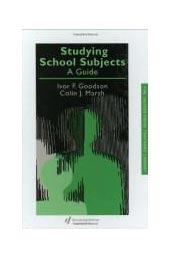Studying School Subjects: a guide
Conclusions, Complexities and Conjectures
The means by which the fragmentary sub-groups were monitored, controlled and periodically unified will be dealt with later. However, in the period of the battle over 'environmental education', two, or more accurately three, major sub-groups within the subject were actively concerned: the regional geographers, the field geographers and, the fastest-growing sub-group, the new geographers. The first two groups representing strong traditions within the subject had large support among school geography teachers. The latter group was largely derived from new developments in the subject within the universities. As related in Chapter 10 the first two sub-groups were considerably more sympathetic to environmental initiatives than the new geographers. This was because the environmental lobby offered aid and sustenance to the field and regional geographers. Hence we find eminent regional geographers like Professor Bryan promoting conferences in environmental studies because this expressed more clearly than new geography 'his own life's work and ambitions as a geographer'. P.R. Thomas explained the affection for environmental approaches entirely in terms of the struggle for survival of the regional sub-group and a college lecturer in geography judged that the new crisis among geography sub-groups 'caused traditional (i.e. regional and field) geographers to flee into environmental studies' for a time. This flirtation proved a short-run phenomenon because of the overwhelming desire for fully-fledged academic status among all geographers; because new geography carried within it the seeds of this final acceptance; and because the activities of the Geographical Association and the university schools of geography together directed and managed the change towards a new 'geographical synthesis' where once again the sub-groups were 'delicately held together'.
The pattern discerned among geography sub-groups in the period of environmental education's emergence is partly echoed when considering biology. Again the subject began with a variety of idiosyncratic versions and groupings devised and taught by specialists from other disciplines, in botany and zoology. By the 1960s biology had also developed a major sub-group whose concern with ecology and field biology bordered on the new environmental approaches. For a time this sub-group gained considerable momentum from initiatives like the Keele Conference which saw this version of biology as promoting environmental awareness.
